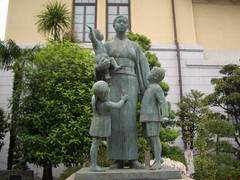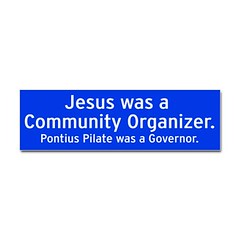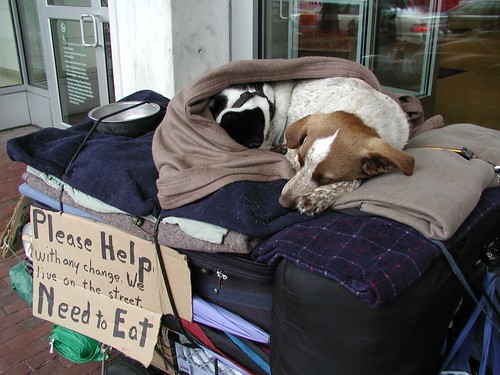Throughout the Famine years, (1816 )nearly a million Irish arrived in the United States. Famine immigrants were the first big wave of poor refugees ever to arrive in the U.S. and Americans were simply overwhelmed. Upon arrival in America, the Irish found the going to be quite tough. With no one to help them, they immediately settled into the lowest rung of society and waged a daily battle for survival.
The roughest welcome of all would be in Boston, Massachusetts, an Anglo-Saxon city with a population of about 115,000. It was a place run by descendants of English Puritans, men who could proudly recite their lineage back to 1620 and the Mayflower ship. Now, some two hundred thirty years later, their city was undergoing nothing short of an unwanted "social revolution" as described by Ephraim Peabody, member of an old Yankee family. In 1847, the first big year of Famine emigration, the city was swamped with 37,000 Irish Catholics arriving by sea and land.
Proper Bostonians pointed and laughed at the first Irish immigrants stepping off ships wearing clothes twenty years out of fashion. They watched as the newly arrived Irishmen settled with their families into enclaves that became exclusively Irish near the Boston waterfront along Batterymarch and Broad Streets, then in the North End section and in East Boston. Irishmen took any unskilled jobs they could find such as cleaning yards and stables, unloading ships, and pushing carts.
And once again, they fell victim to unscrupulous landlords. This time it was Boston landlords who sub-divided former Yankee dwellings into cheap housing, charging Irish families up to $1.50 a week to live in a single nine-by-eleven foot room with no water, sanitation, ventilation or daylight.
In Boston, as well as other American cities in the mid-1800s, there was no enforcement of sanitary regulations and no building or fire safety codes. Landlords could do as they pleased. A single family three-story house along the waterfront that once belonged to a prosperous Yankee merchant could be divided-up room by room into housing for a hundred Irish, bringing a nice profit.
The overflow Irish would settle into the gardens, back yards and alleys surrounding the house, living in wooden shacks. Demand for housing of any quality was extraordinary. People lived in musty cellars with low ceilings that partially flooded with every tide.
Old warehouses and other buildings within the Irish enclave were hastily converted into rooming houses using flimsy wooden partitions that provided no privacy.
A Boston Committee of Internal Health studying the situation described the resulting Irish slum as "a perfect hive of human beings, without comforts and mostly without common necessaries; in many cases huddled together like brutes, without regard to age or sex or sense of decency. Under such circumstances self-respect, forethought, all the high and noble virtues soon die out, and sullen indifference and despair or disorder, intemperance and utter degradation reign supreme."
The unsanitary conditions were breeding grounds for disease, particularly cholera. Sixty percent of the Irish children born in Boston during this period didn't live to see their sixth birthday. Adult Irish lived on average just six years after stepping off the boat onto American soil.
Those who were not ill were driven to despair. Rowdy behavior fueled by alcohol and boredom spilled out into the streets of Boston and the city witnessed a staggering increase in crime, up to 400 percent for such crimes as aggravated assault. Men and boys cooped up in tiny rooms and without employment or schooling got into serious trouble. An estimated 1500 children roamed the streets every day begging and making mischief.
There were only a limited number of unskilled jobs available. Intense rivalry quickly developed between the Irish and working class Bostonians over these jobs. In Ireland, a working man might earn eight cents a day. In America, he could earn up to a dollar a day, a tremendous improvement. Bostonians feared being undercut by hungry Irish willing to work for less than the going rate. Their resentment, combined with growing anti-Irish and anti-Catholic sentiment among all classes in Boston led to 'No Irish Need Apply' signs being posted in shop windows, factory gates and workshop doors throughout the city.
Irish in New York
New York, three times the size of Boston, was better able to absorb its incoming Irish. Throughout the Famine years, 75 percent of the Irish coming to America landed in New York. In 1847, about 52,000 Irish arrived in the city which had a total population of 372,000. The Irish were not the only big group of immigrants arriving. A substantial German population totaling over 53,000 also arrived in 1847.
In New York, the Irish did not face the degree of prejudice found in Boston. Instead, they were confronted by shifty characters and con artists. Confused Irish, fresh off the farm and suffering from culture shock, were taken advantage of the moment they set foot on shore.
Immediately upon arrival in New York harbor, they were met by Irishmen known as 'runners' speaking in Gaelic and promising to 'help' their fellow countrymen. Many of the new arrivals, quite frightened at the mere prospect of America, gladly accepted. Those who hesitated were usually bullied into submission. The runner's first con was to suggest a good place to stay in New York; a boarding house operated by a friend, supposedly with good meals and comfortable rooms at very affordable rates, including free storage of any luggage.
The boarding houses were actually filthy hell-holes in lower Manhattan. Instead of comfortable rooms, the confused arrivals were shoved into vermin-infested hovels with eight or ten other unfortunate souls, at prices three or four times higher than what they had been told. They remained as 'boarders' until their money ran out at which time their luggage was confiscated for back-rent and they were tossed out into the streets, homeless and penniless.
During the entire Famine period, about 650,000 Irish arrived in New York harbor. All incoming passenger ships to New York had to stop for medical inspection. Anyone with fever was removed to the quarantine station on Staten Island and the ship itself was quarantined for 30 days. But Staten Island was just five miles from Manhattan. Runners were so aggressive in pursuit of the Irish that they even rowed out to quarantined ships and sneaked into the hospitals on Staten Island despite the risk of contracting typhus.
Another way to take advantage of the Irish was to sell them phony railroad and boat tickets. Runners working with 'forwarding agents' sold bogus tickets that had pictures of trains or boats the illiterate immigrants wished to board to leave Manhattan for other U.S. cities. The tickets were either worthless, or if they were valid, had been sold at double the actual price or higher. On the boats, the immigrant were shoved into jam-packed steerage sections, although they thought they had paid for better accommodations. Sometimes, halfway to their destination, they were told to pay more or risk being thrown overboard.
The penniless Irish who remained in Manhattan stayed crowded together close to the docks where they sought work as unskilled dock workers. They found cheap housing wherever they could, with many families living in musty cellars. Abandoned houses near the waterfront that once belonged to wealthy merchants were converted into crowded tenements. Shoddy wooded tenements also sprang up overnight in yards and back alleys to be rented out room by room at high prices. Similar to Boston, New York experienced a high rate of infant mortality and a dramatic rise in crime as men and boys cooped-up in squalid shanties let off steam by drinking and getting in fights.
Anti-Irish Sentiment
U.S. immigration records indicate that by 1850, the Irish made up 43 percent of the foreign-born population. Up to ninety percent of the Irish arriving in America remained in cities. New York now had more Irish-born citizens than Dublin. Those who did not stay in New York or Boston traveled to places such as Albany, Cincinnati, Pittsburgh, Chicago, and out west to Butte, Montana, and San Francisco. Upon arrival, the Irishman and his family would usually go straight to the 'Irish quarter,' locate people from County Mayo, County Cork, or wherever they had come from, and settle in among them.
Unlike other nationalities that came to America seeking wide open spaces, the Irish chose to huddle in the cities partly because they were the poorest of all the immigrants arriving and partly out of a desire to recreate the close-knit communities they had cherished back in Ireland. Above all, the Irish loved each other's company, enjoying a daily dose of gossip, conversation, poetry and story telling, music and singing, and the ever-present jokes and puns.
But the daily pressures of living in America at the bottom rung of society also brought out the worst in them. Back home, the Irish were known for their honesty, law-abiding manners, and chastity. In America, old social norms disintegrated and many of the Irish, both men and women, behaved wildly. In the hopeless slums of New York, prostitution flourished and drunkenness occurred even among children.
Wherever they settled, the Irish kept to themselves to the exclusion of everyone else, and thus were slow to assimilate. Americans were thus slow to accept the Irish as equals, preferring instead to judge them by the cartoon stereotypes of drunken, brawling Irishmen published in newspapers of the day. Irish immigrants were also derided in the press as 'aliens' who were mindlessly loyal to their Catholic leaders in place of any allegiance to America.
The sheer numbers of Irish pouring into the U.S. meant that Catholicism was on the verge of becoming the single largest Christian denomination in America. Many American Protestants held the simplistic view that if the numbers of Roman Catholics were increasing then the power and influence of the Papacy in America was also increasing, threatening America's political independence. Fear of the Papacy thus became fear of the Irish and resulted in outright violence.
In Boston, a mob of Protestant workmen burned down a Catholic convent. Protestant mobs in Philadelphia rioted against Irish Catholics in 1844. The Irish in Philadelphia promptly gathered into mobs of their own and fought back, with the violence lasting over three days. Two Catholic churches were burned down along with hundreds of Irish homes and a dozen immigrants killed. In New York, Archbishop John Hughes, on hearing of the Philadelphia attacks, deployed armed Irishmen to protect his own churches. Then he paid a visit to New York's mayor and warned him that if just one Catholic church was touched, the Irish would burn all of Manhattan to the ground. Other cities that experienced anti-Catholic violence included; Baltimore, St. Louis, New Orleans and Louisville, Kentucky.
Militant anti-Catholics formed a third political party nicknamed the 'Know-Nothings' seeking to curtail Irish immigration and keep them from becoming naturalized Americans in order to prevent them from ever gaining any political power. The movement was most successful in Massachusetts which elected Know-Nothing candidates to every statewide office in 1854, including governor. Throughout America, anti-Irish sentiment was becoming fashionable. Newspaper advertisements for jobs and housing in Boston, New York and other places now routinely ended with "Positively No Irish Need Apply."
But American concerns over Irish immigration soon took a back seat to the tremendous issue of slavery which was about to rip the young nation apart. For Irish Americans, the turning point of their early years in the U.S. would be the American Civil War. Over 140,000 enlisted in the Union army while others in the South enrolled in the Confederate ranks. Irish units, including the all-Irish 69th New York Regiment, participated in the monumental battles at Bull Run, Antietam, and Gettysburg, earning a reputation for dependability and bravery. At Fredericksburg, the 'Fighting 69th' repeatedly charged a well-entrenched Confederate position on Marye's Heights to the astonishment of all who observed.
However, during the Civil War, Irish civilians were heavily involved in the notorious New York draft riots in which African Americans were singled out for violence. Relations between Irish immigrants and African Americans in New York had never been good. From their earliest arrival in the U.S. the Irish had competed with freed slaves for the most menial jobs and cheapest housing. Decades of frustration and pent-up emotions finally erupted on the streets over three hot summer days in July 1863 resulting in numerous beatings and 18 blacks murdered. Federal troops from Gettysburg had to be called in to quell the violence. Hundreds of buildings, including a black orphanage, were destroyed along with $5 million in property damage.
Rise of the Irish
Following the Civil War, Irish laborers once again provided the backbreaking work needed for the enormous expansion of rapidly industrializing America. They ran factories, built railroads in the West, and worked in the mines of Pennsylvania, Virginia and Montana. They were carpenter's assistants, boat-builders, dock-hands, bartenders and waiters. In an era when there were virtually no governmental constraints on American capitalism, the Irish organized the first trade unions and conducted strikes when necessary for higher wages, shorter hours, and safer working conditions.
Single Irish women found work as cooks and maids in houses belonging to wealthy families on Beacon Hill in Boston and along Fifth Avenue in New York, and in most other big cities. Many lived inside the homes in the servants' quarters and enjoyed a standard of living luxurious by comparison to the life they had known in Ireland or in the tenements. These women were cheerful, kind-hearted, hard working and thrifty, always managing to save a little money out of their salary for those back in Ireland. From 1850 to 1900 an estimated $260 million poured into Ireland from America, bringing over more family members and helping out those remaining behind.
The women also donated generously to their local Catholic parishes for new parochial schools and the construction of stained-glass churches with marble statues and altars. The beautiful cathedral-like buildings became great sources of pride among the Irish, making the statement that Catholics had 'arrived' in America. Catholic parishes became the center of family life, providing free education, hospitals, sports and numerous social activities, recreating to some degree the close-knit villages the Irish had loved back home while at the same time protecting them from unfriendly Americans.
Catholics in Ireland had endured centuries of discrimination at the hands of a dominant culture ruled by English and Anglo-Irish Protestants. They arrived in America only to find they were once again facing religious discrimination by the dominant culture; this time American Protestants. Eventually the Irish discovered the path to changing things in their new home lay in the local ballot box.
The large numbers of Irishmen now eligible to vote in cities such as New York and Boston meant they could no longer be politically ignored. The sons and grandsons of Famine immigrants joined the Democratic Party in droves, organized themselves by every ward and precinct into political 'machines' then became candidates for office, first getting elected to city councils, later to the mayor's office itself.
In Boston, newly elected Mayor James Michael Curley boldly announced in 1914: "The day of the Puritan has passed; the Anglo-Saxon is a joke; a new and better America is here." Curley dominated Boston politics for nearly forty years. He freely used patronage as a way to reward loyalty and get Irish votes, filling various city departments with his supporters. The Irish delighted in taking civil service jobs with their steady paychecks and long-term security. In cities with big Irish populations, police and fire departments often became staffed by Famine descendants.
In New York, the political machine was known as Tammany Hall, a powerful but corrupt organization that traded favors and jobs for votes and money. Out of Manhattan's fourth ward emerged Al Smith, the grandson of Irish immigrants, who rose from the tenements of the Lower East Side to seek the American presidency. As governor of New York in the 1920s, Smith originated ground-breaking social reform programs that later became the model for Franklin Roosevelt's New Deal. But as the Democratic candidate for president in 1928, Smith was relentlessly bashed by anti-Catholic activists and was resoundingly defeated, losing to incumbent President Herbert Hoover.
The most extraordinary Famine descendant was John Fitzgerald Kennedy, great-grandson of Patrick Kennedy, a farmer from County Wexford who had left Ireland in 1849. Although other Presidents, including Andrew Jackson and Woodrow Wilson had Irish roots, John Kennedy became the first Roman Catholic. To millions of Irish Catholic Americans, Kennedy's election in 1960 as the 35th President of the United States signaled an end to the century-long struggle for full acceptance in the U.S.
By the time of Kennedy's victory, descendants of the Famine immigrants were steadily leaving the old Irish working-class neighborhoods of Boston, New York and other cities and settling into the new suburbs sprouting across America. Irish Americans, three or four generations removed from their Famine forebears, now preferred a more generic middle-class American lifestyle complete with manicured lawns and backyard barbecues. Some of them even converted to Republicanism and wound up voting for another 'Irishman' named Ronald Reagan for president.
The Irish, the first big group of poor refugees ever to come to the United States, had born the brunt of American resentment and prevailed. They could now count on the fact that their children might be educated at Harvard University or perhaps rise to a top position in any corporation or business, based on their talent and ability. And they had paved the way for the waves of immigrants from Europe and other places that followed in their footsteps.
Hard work and sheer determination had allowed the Irish in America to overcome countless obstacles and find success and happiness. But their country of origin remained a very sad place in the decades following the Famine.
For you see Gentle Reader, its where we come from that makes better Americans, and don't you think that we don't work hard to be good citizens. How many people do you know that are trying to leave this country? (Besides, perhaps yours truly who wants to go home, where the green of the hills make you heart soar and there is a little bit of heaven there.



 Dear Lord Jesus,
Dear Lord Jesus, 






